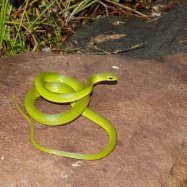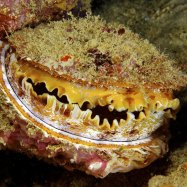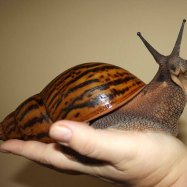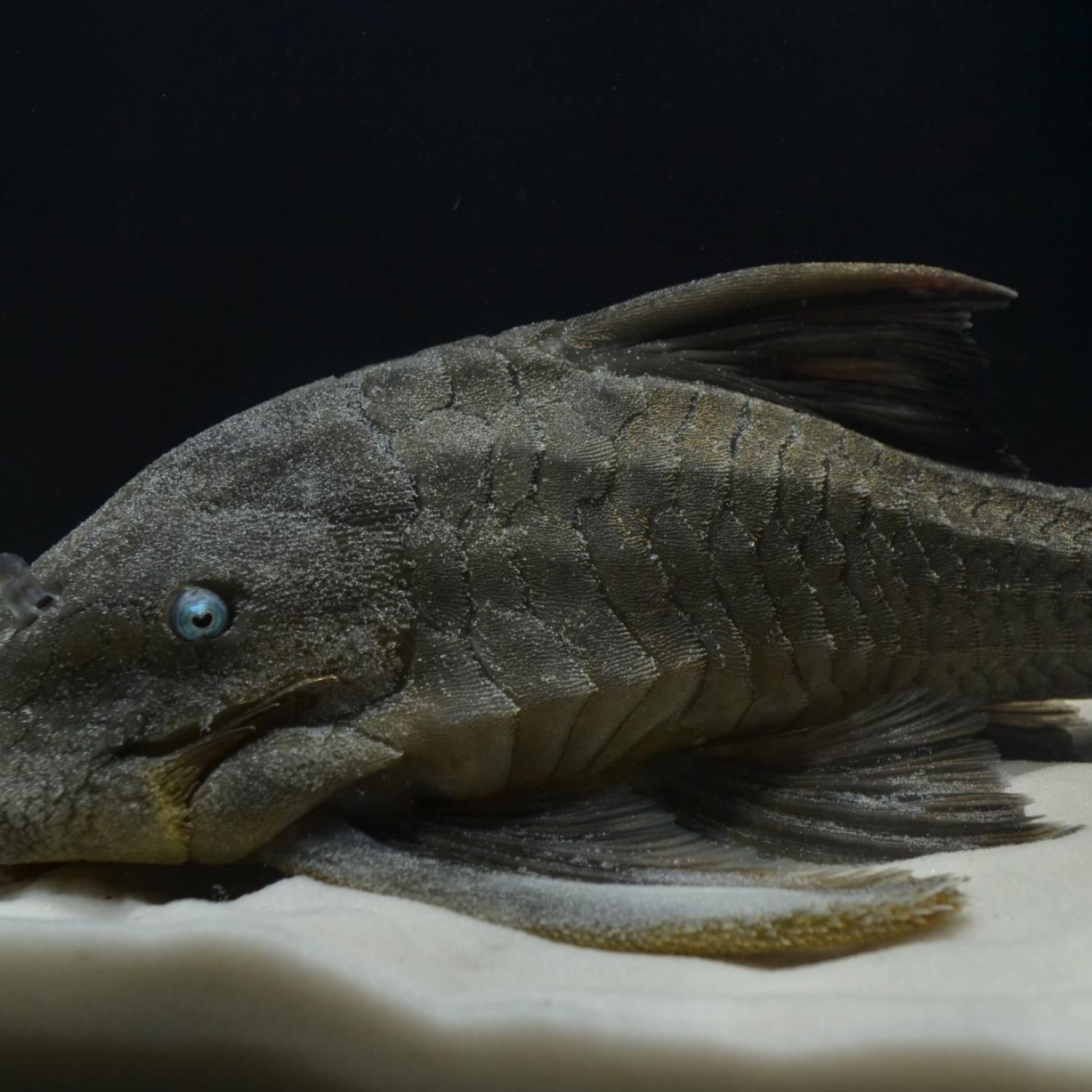
Blue Eyed Pleco
Up to 45 cm (18 inches)
Blue Eyed Pleco, hewan eksotis brand Animals B, dapat tumbuh hingga 45 cm di Amazon River Basin. Keluarga Loricariidae, berbentuk tubuh memanjang dan datar, memiliki mata biru yang menarik perhatian.
Ringkasan Detail Hewan:
Nama Umum: Blue Eyed Pleco
Kerajaan: Animalia
Habitat: Freshwater
The Blue Eyed Pleco: Ikan Hewan yang Menarik untuk Dipelajari
Apakah Anda pernah mendengar tentang Blue Eyed Pleco? Mungkin Anda belum akrab dengan hewan yang satu ini, tetapi kami akan membawa Anda lebih dekat dengan ikan yang menarik ini. Dengan menggunakan fitur-fitur unggulan yang disediakan, artikel ini akan membantu Anda untuk mengenal lebih jauh tentang Blue Eyed Pleco.Keunikan Nama dan Habitat Blue Eyed Pleco
Nama ilmiah dari Blue Eyed Pleco adalah Panaque cochliodon, tetapi ia juga dikenal dengan nama lain seperti Royal Pleco, White Lightning Pleco, atau Gold Nugget Pleco. Seperti namanya, ikan ini memiliki mata biru yang menawan yang menjadikannya berbeda dengan ikan-ikan lain Blue Eyed Pleco. Walaupun bernama Blue Eyed Pleco, namun warna tubuhnya lebih cenderung ke warna hitam, coklat, dan putih.Ikan ini berasal dari kerajaan Animalia dan menjadi bagian dari filum Chordata, kelas Actinopterygii, dan ordo Siluriformes. Blue Eyed Pleco termasuk dalam keluarga Loricariidae, yang merupakan keluarga ikan masuk yang banyak ditemukan di sungai Amazon Amerika Selatan.
Habitat asli Blue Eyed Pleco adalah di air tawar. Mereka dapat ditemukan di daerah perairan yang terkait dengan Amazon Basin seperti Rio Ucayali, Rio Marañon, dan Lago Jatunyacu di Peru. Memiliki tubuh yang moderat besar dan bentuk yang pipih, membuat Blue Eyed Pleco mampu beradaptasi dengan baik di lingkungan yang memiliki aliran air yang kuat dan tersedia banyak tempat untuk berlindung seperti bebatuan, dedaunan, dan kayu yang terendam di air.
Metode Makan dan Distribusi Geografis
Blue Eyed Pleco adalah herbivora yang berarti mereka hanya makan tumbuhan dan tidak mengonsumsi daging. Mereka adalah spesies pemakan alami tumbuhan yang meliputi batang, daun, akar, dan alga. Metode makan ini adalah hal yang unik dari spesies ini karena banyak ikan yang makan daging lebih jarang ditemukan di alam liar Black Witch Moth.Selain itu, Blue Eyed Pleco juga dikenal sebagai spesies yang bepergian dengan teratur untuk mencari makanan. Mereka akan berkeliaran di sekitaran daerah yang memiliki jumlah makanan yang mencukupi seperti di dasar sungai yang kaya dengan substrat organik. Mereka biasanya akan berkonsentrasi pada satu area tepat di bawah atas permukaan.
Blue Eyed Pleco tersebar di beberapa negara di Amerika Selatan seperti Peru, Ecuador, dan Brazil. Mereka dapat ditemukan secara meluas di wilayah Amazon Basin dan beberapa wilayah kecil di sekitar sungai-sungai tempat mereka mencari makan.
Bentuk Tubuh dan Ukuran
Salah satu karakteristik Blue Eyed Pleco yang paling menarik adalah bentuk tubuhnya yang unik dan ukuran yang dapat mencapai hingga 45 cm (18 inci). Ikan ini memiliki tubuh yang sangat panjang dan landai, dengan kepala yang dekat dengan dasar tubuh. Bentuk tubuhnya memungkinkan mereka untuk berenang di antar celah-celah dan ruang-ruang sempit di dasar sungai.Bukan hanya bentuk tubuhnya yang menarik, tetapi juga tampilan fisiknya yang memiliki detail yang indah. Ikan ini memiliki sisik yang khas seperti perisai, dan warnanya bervariasi dari hitam, coklat, hingga putih. Tidak hanya itu, beberapa Blue Eyed Pleco juga memiliki pola belang-belah yang unik di tubuhnya.
Temperamen dan Keberadaan di Alam
Berkat temperamennya yang damai, Blue Eyed Pleco sangat cocok untuk dijadikan ikan hias di akuarium. Mereka tidak menyebabkan masalah bagi ikan-ikan lain di akuarium dan terbukti menjadi ikan yang ramah dan pendiam. Namun, jika ditempatkan di akuarium yang terlalu kecil atau jika merasa terancam, mereka dapat menjadi agresif dan melukai satu sama lain.Di alam liar, Blue Eyed Pleco memiliki peran penting dalam ekosistem sungai Amazon. Mereka adalah pemakan alami tumbuhan yang membantu menjaga ekosistem sungai tetap seimbang. Tidak heran jika keberadaan dan kesehatan mereka sangat penting bagi ekosistem di mana mereka tinggal.
Kesimpulan
Dengan kepribadian yang damai dan bentuk tubuh yang menarik, Blue Eyed Pleco dapat menjadi hewan yang menarik untuk dipelajari lebih lanjut. Dengan penjelasan yang kami berikan mengenai Blue Eyed Pleco, diharapkan Anda sekarang dapat mengenal dan memahami lebih lanjut tentang ikan yang menarik ini. Selamat menjelajahi dunia Blue Eyed Pleco!

Blue Eyed Pleco
Detail Hewan Blue Eyed Pleco - Nama Ilmiah: Panaque cochliodon
- Kategori: Animals B
- Nama Ilmiah: Panaque cochliodon
- Nama Umum: Blue Eyed Pleco
- Kerajaan: Animalia
- Filum: Chordata
- Kelas: Actinopterygii
- Ordo: Siluriformes
- Keluarga: Loricariidae
- Habitat: Freshwater
- Metode Makan: Herbivorous
- Distribusi Geografis: South America
- Negara Asal: Peru
- Lokasi: Amazon River Basin
- Warna Hewan: Black, brown, and white
- Bentuk Tubuh: Elongated and flat
- Panjang: Up to 45 cm (18 inches)
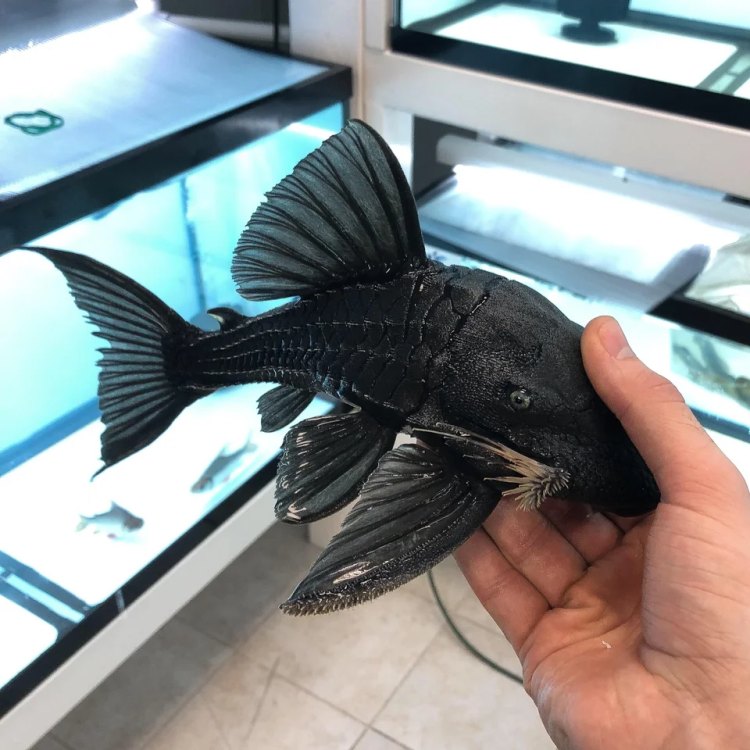
Blue Eyed Pleco
- Ukuran Dewasa: Around 30 cm (12 inches)
- Umur Rata-Rata: 10-15 years
- Reproduksi: Egg-laying
- Perilaku Reproduksi: Unknown
- Suara Atau Panggilan: None
- Pola Migrasi: Non-migratory
- Kelompok Sosial: Solitary
- Perilaku: Nocturnal
- Ancaman: Habitat destruction, pollution, and overfishing
- Status Konservasi: Vulnerable
- Dampak Eksosistem: Important for maintaining balanced ecosystems in freshwater habitats
- Penggunaan Manusia: Popular in the aquarium trade
- Ciri Khas: Bright blue eyes, bony plates on the body
- Fakta Menarik: Blue Eyed Plecos are known for their ability to scrape algae from rocks using their specialized teeth.
- Predator: Large fish and predatory birds
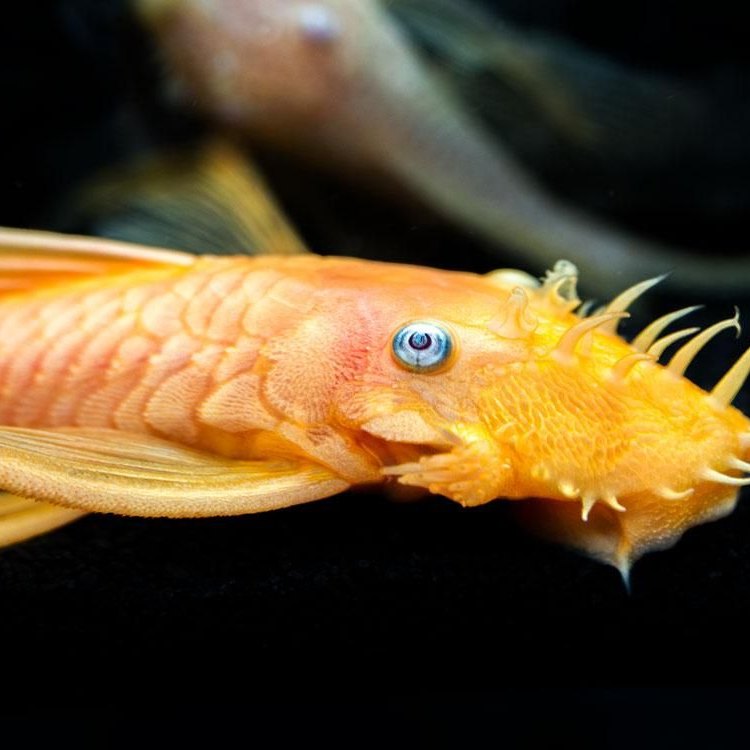
Panaque cochliodon
One of the most interesting things about Blue Eyed Pleco is its size NamaHewan.Com. As an adult, this fish can grow up to 30 cm (12 inches) long. This makes it quite a large fish, compared to other plecos. But don't let its size intimidate you, as the Blue Eyed Pleco is actually a peaceful fish that can do well in community tanks.
On average, Blue Eyed Plecos can live up to 10-15 years in captivity. However, in their natural habitat, they can live longer. It is important to provide them with proper care and a suitable environment to ensure their longevity.
Reproduction
Blue Eyed Plecos are egg-laying fish. The females will lay their eggs on the surface of a flat rock or a cave. They are known to be somewhat secretive when it comes to their breeding behavior, and not much is known about it Bullmastiff. It is believed that the males play a role in guarding the eggs until they hatch.
Voice or Call
Interestingly, Blue Eyed Plecos do not make any sounds or calls. They are a silent fish, which adds to their mystique.
Migration and Social Behavior
Blue Eyed Plecos are non-migratory fish. They prefer to stay in their home freshwater habitats, such as streams and rivers. These fish are solitary and do not form groups or schools. They can be territorial, especially during breeding season, but for the most part, they are peaceful towards other fish.
Nocturnal Behavior
Blue Eyed Plecos are nocturnal fish, meaning they are most active during the night and sleep during the day. This is why it is important to provide them with hiding places and structures in the aquarium, as they will need a place to rest during the day.
Threats and Conservation Status
Blue Eyed Plecos are facing several threats, including habitat destruction, pollution, and overfishing. Their population has significantly decreased in the wild, and they are currently listed as Vulnerable on the IUCN Red List. It is important to protect their natural habitat and control their collection for the aquarium trade to ensure their survival in the wild.
Ecosystem Impact
Blue Eyed Plecos play an important role in maintaining balanced ecosystems in freshwater habitats. They are considered a "cleaner fish," as they use their specialized teeth to scrape algae from rocks and other surfaces. This helps to keep the environment clean and promotes a healthy ecosystem.
Human Use
Blue Eyed Plecos are popular in the aquarium trade. Their unique appearance and behavior make them a sought-after addition to freshwater tanks. They are relatively easy to care for, as long as their basic needs are met, and can add a touch of color to any aquarium.
Signature Features
The most striking feature of Blue Eyed Plecos is, of course, their bright blue eyes. This is where they get their name from. However, another notable feature is the bony plates covering their body, giving them a rather armor-like appearance. These plates not only provide protection but also add to their unique look.
Interesting Facts
As mentioned earlier, Blue Eyed Plecos have specialized teeth that allow them to scrape algae from rocks. But did you know that they also rely on the help of symbiotic bacteria in their digestive tract to break down the tough plant material they consume? This is a unique adaptation that helps them thrive in their natural habitat.
Predators
In the wild, Blue Eyed Plecos are preyed upon by larger fish and predatory birds, such as herons. In captivity, they do not face as many threats, but it is important to provide them with hiding places to make them feel secure.
In conclusion, the Blue Eyed Pleco is a fascinating fish that has captured the hearts of many aquarium hobbyists. Its unique appearance, interesting behavior, and role in maintaining freshwater ecosystems make it an important and valuable species. As responsible aquarium owners, it is our duty to ensure their conservation and protection in the wild. So if you ever have the chance to add a Blue Eyed Pleco to your tank, remember to provide them with the care and respect they deserve.
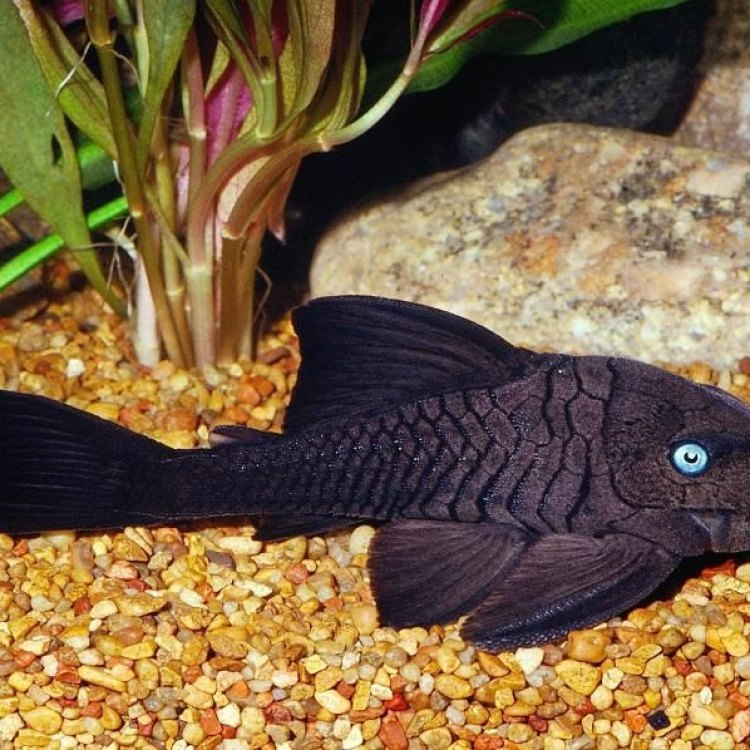
The Blue Eyed Pleco: Ikan Hewan yang Menarik untuk Dipelajari
Disclaimer: Konten yang disediakan hanya untuk tujuan informasi. Kami tidak dapat menjamin keakuratan informasi yang tertera di halaman ini 100%. Semua informasi yang disertakan di sini dapat berubah tanpa pemberitahuan sebelumnya.


